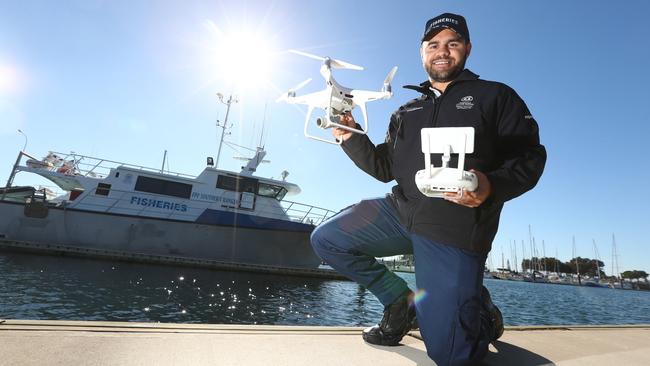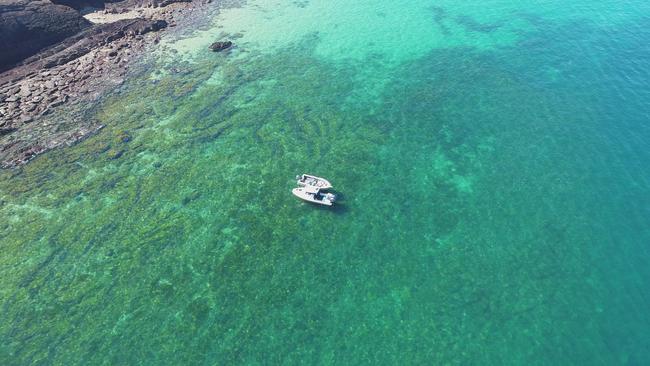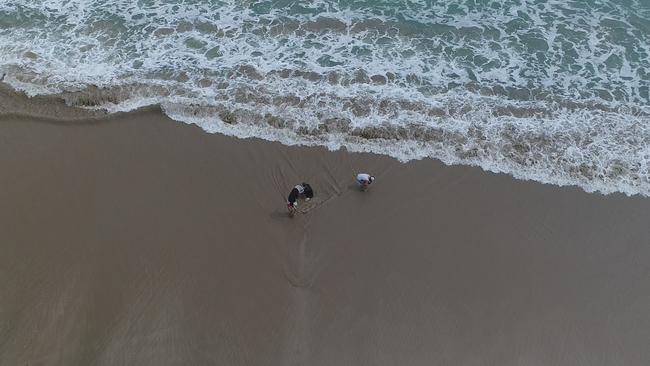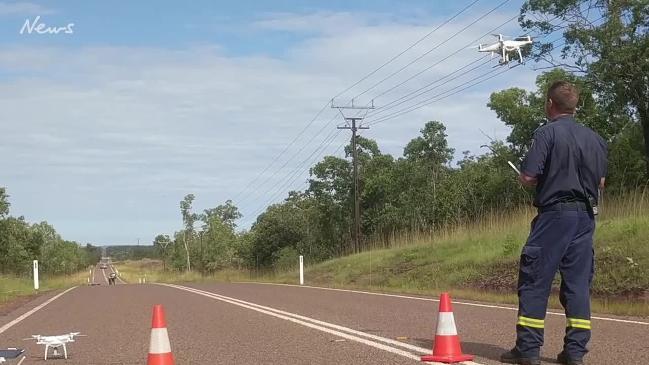Hi-tech drones to help catch SA abalone poachers and fish thieves
ABALONE poachers and fish thieves beware — South Australia’s Fisheries officers have a stealthy new weapon in their arsenal. And it’s watching you.
SA News
Don't miss out on the headlines from SA News. Followed categories will be added to My News.
ABALONE poachers and fish thieves beware — South Australia’s Fisheries officers have a stealthy new weapon in their arsenal.
After a lengthy trial, a state-of-the art drone equipped with a high resolution surveillance camera is being introduced to give officers a silent, birdseye view of potential targets.
The drone has already shown its potential, resulting in a kayaker illegally spearing crayfish near The Bluff at Victor Harbor being apprehended after an officer covertly filmed him from the shore.
PIRSA Director of Fisheries and Operations Peter Dietman said the drone would be a “valuable tool’’ that would assist officers in many situations.
“Compliance is about always looking at modern technology and investigation techniques and the drones are another one of them we can use,’’ he said.

“We have been watching the development of them, what their applications are and decided to purchase one and trial it. We can see a lot of good and variable uses for it.’’
The trial involved testing the drone in a variety of sea, wind and weather conditions and operational scenarios to ensure it could be operated safely and posed no risk to the public or its operator.
It is likely the drone will be regularly used by Fisheries officers to monitor locations such as Goolwa Beach during the cockle season when bag and “boot’’ limits are often exceeded by large family groups.

Other locations will include popular crabbing beaches such as those at Port Gawler and Port Parham where the taking of undersized crabs during the peak season is also a problem.
The inter-tidal zones at locations such as Hallett Cove and the Fleurieu Peninsula will also attract attention to prevent the illegal gathering of shellfish at certain times of the year.
“There is a lot of area to cover at some locations at times, and a lot of people,’’ Mr Dietman said.
“It gives us the capacity to monitor them without having to put cars and people on the beach at every location.’’

He said during the trial most people observed were unaware of the drone’s presence.
While the drones will primarily be used in public fishing areas, it is likely it will also be used as part of covert operations when required — such as abalone poaching.
“We will be able to get to more remote locations such as along the south coast where we have instances of reef picking,” Mr Dietman said.
“Fishers who have done nothing wrong have nothing to worry about.’’
Last year Fisheries officers had more than 16,000 contacts and inspections of boats and land-based anglers that resulted in 1240 offences and either a caution, expiantion notice or in severe cases prosecution of the offender.



